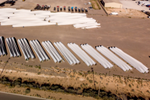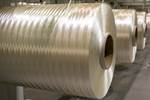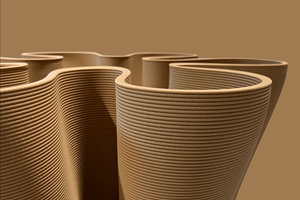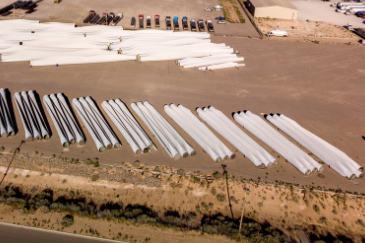Airbus flies bio-based carbon fiber helicopter nose panel
Proof-of-concept part used bio-based acrylontrile precursor with same performance as conventional CFRP but with significantly less CO2.
Bio-based acrylonitrile was used in this demonstrator carbon fiber-reinforced polymer (CFRP) nose panel flown on the Airbus Helicopter H145 PioneerLab in May 2024. Source | Airbus
As revealed in a recent Airbus (Toulouse, France) article, “,” the aerospace company is introducing bio-derived materials to aircraft production that can remove CO2 from the atmosphere.
Carbon fiber composites are produced from fossil fuels. They can also be made from sustainable organic materials. Airbus reports that it has created an experimental helicopter panel using such “bio-derived” fibers with a production process that starts with capturing atmospheric CO2.
Airbus is committed to leading aerospace’s decarbonization. While this clearly implies reducing the CO2 emissions of its products over their life cycle (Scope 3), any contribution helps, including cutting carbon from production. To that end, Airbus specialists are examining alternatives to fossil fuel-derived carbon fibers that are used to build structural aircraft components, such as fuselage shells or wings.
The aim is to develop, and eventually industrialize, a bio-based carbon fiber with the equivalent performance and safety of today’s petroleum-based composites. Airbus believes this can be achieved by adopting “power to X” technology that converts renewable energy into chemical products including synthetic hydrocarbons. These can then be used to produce bio-fibers — including a bio-based replacement for the petroleum-derived polyacryonitrile (PAN) precursor for carbon fiber. The process requires renewable carbon, which can originate from non-fossil sources such as biomass, or from capturing CO2 directly from the atmosphere.
Airbus researchers have used an acrylonitrile-derived biofiber to manufacture a proof-of-concept composite nose panel for Airbus Helicopters’ . The non-structural nose is a safe test part and small enough to produce quickly and cost effectively. The panel was flight-tested in May 2024 to demonstrate the alternative fiber’s airworthiness and is reportedly as stiff and strong as the conventional part.
The Airbus team used a chemically identical, sustainable alternative to the conventional PAN precursor to produce the bio-based carbon fibers with the same performance level. The alternative acrylonitrile is derived from sustainable International Sustainability & Carbon Certification (ISCC)-certified non-fossil feedstocks such as wood and food waste, recycled cooking oils and/or algae, as well as renewable sources of ammonia and propylene.
Notably, full life cycle analysis (LCA) undertaken by Airbus suggests that producing sustainable acrylonitrile (and other bio-based chemicals and intermediates) generates significantly less CO2 than conventional petroleum-based materials. However, industrializing these new alternatives is still nascent. Scaling up to where corresponding CO2 reductions move the dial will require regulatory commitment and massive capital investment.
For now, the PioneerLab nose panel remains a proof of concept. The challenge for Airbus and other manufacturers is to work with supply chains to make bio-fiber production economically viable, and to ensure it can be ramped up cost effectively to meet accelerating aircraft production.
Bio-materials are just one of many pathways Airbus is pursuing to enable low-carbon aviation and mobility. Still, the less a vehicle weighs, the less it emits. Composites’ proven performance means they will play an important weight-saving role for many more years to come.
Related Content
Sulapac introduces Sulapac Flow 1.7 to replace PLA, ABS and PP in FDM, FGF
Available as filament and granules for extrusion, new wood composite matches properties yet is compostable, eliminates microplastics and reduces carbon footprint.
Read MoreOtto Aviation launches Phantom 3500 business jet with all-composite airframe from Leonardo
Promising 60% less fuel burn and 90% less emissions using SAF, the super-laminar flow design with windowless fuselage will be built using RTM in Florida facility with certification slated for 2030.
Read MorePlant tour: Teijin Carbon America Inc., Greenwood, S.C., U.S.
In 2018, Teijin broke ground on a facility that is reportedly the largest capacity carbon fiber line currently in existence. The line has been fully functional for nearly two years and has plenty of room for expansion.
Read MoreBladder-assisted compression molding derivative produces complex, autoclave-quality automotive parts
HP Composites’ AirPower technology enables high-rate CFRP roof production with 50% energy savings for the Maserati MC20.
Read MoreRead Next
Trillium selects INEOS for next sustainable acrylonitrile facility
INEOS, backing 75% of the world’s operating acrylonitrile capacity, will establish the conversion of plant-based glycerol into acrylonitrile in early 2025.
Read MoreCW Tech Days explores the composites sustainability challenge
During the one-day virtual event on April 17 from 11 a.m. to 3:30 p.m. ET, seven industry experts will provide insight into hot topics like waste reduction, energy efficiency, bio-materials and recycling.
Read MoreBio-based acrylonitrile for carbon fiber manufacture
The quest for a sustainable source of acrylonitrile for carbon fiber manufacture has made the leap from the lab to the market.
Read More












